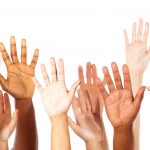What We All Need to Know About the Term “Intersectionality”
Author: Dr. Priscilla Butler
Multicultural and intersectional aspects of identity are crucial components of human psychology. Yet, properly understanding and accounting for these factors can be challenging. Although we each construct our identities to some extent, society does, too.
Our identities affect the way we interact with the world.
Our identities affect the way the world interacts with us.
Here’s what you need to know…
Diversity is an interactive puzzle.
Developmental theory and research have focused on single identity categories (race or sexual orientation, for example), and examined the consequences of minority status in that category on life outcomes. Despite seeing the importance of key aspects of identity, we too often regard people as more alike than they really are, obscuring important aspects of their experience. Intersectional models of identity suggest that social categories combine to shape the self-experiences and life outcomes of individuals across life domains.
People are often disadvantaged by multiple sources of oppression.
The interconnected nature of social categorization creates overlapping and interdependent systems of discrimination or advantage.
For instance, statistically speaking –a black man makes $0.74 to a white man’s dollar and a white woman makes $0.78. Black women, faced with multiple forms of oppression, only make $0.64. Understanding intersectionality is essential to combatting the interwoven prejudices people face in their daily lives.
There are many, many identity factors, both visible and invisible.

Our identity consists of the various characteristics we use to categorize and define ourselves and the various characteristics that are constructed by those around us. Sometimes people only think of identity as the visible characteristics of a person such as sex, ethnicity, and race. Many of our identity characteristics can be invisible, however. Some of these factors include:
- Religion
- Socioeconomic status
- Sexual orientation
- Gender identity
- Physical ability
- Marital/relationship status
- Parent or childless
- Family size and composition
- Education/Career
A person’s different identity categories create both sameness and uniqueness.
We intersect in different ways with different people. There are also intersections within identity categories (eg, LGBTQ+) as well as among them. In fact, the graphic just gets more complex:

We are all members of multiple groups whose overlapping identities influence our development, social relationships, opportunities, and worldview.
Critical developmental periods are key to social identity development.
While we identify, explore, and integrate our own intersecting identities during middle childhood, adolescence, and emerging adulthood – it is never too soon to provide children with culturally responsive, anti-bias education about social identities. From the very beginning of their life, children learn about their culture and the world around them from family caregivers.
Did you know…
- Children as young as 2 1/2 to 3 years old become aware of socially prevailing ideas, feelings, and stereotypes about people and about themselves.
- A child’s interactions with parents, other children, the community, the media, and caregivers inevitably shapes their perception and judgment of others.
- Young children have the capacity for undoing any pre-existing, unfair perceptions of others as they engage in meaningful, culturally responsive experiences with the primary caregivers in their lives.
Different AND the same!
A healthy identity does not rest on feelings of superiority, “power over others,” the need to be “best,” or possession of more material things than others. It involves seeing oneself as a part of the whole, not the center; unique, but not “special.”
Understanding intersectionality allows us to move towards being more inclusive, to unlearn our own internalized areas of dominance and oppression and thus creating a more just and inclusive society for all.
Below is a resource for families on how to support young children’s social and cultural development: Culture Matters: Supporting Children’s Social and Cultural Development-Families
Adapted from the following References & Resources:
American Psychological Association. 2017. Multicultural Guidelines: An Ecological Approach to Context, Identity, and Intersectionality. Retrieved from: http://www.apa.org/about/policy/multicultural-guidelines.pdf
Ghavami, N., Katsiaficas, D., & Rogers, L. O. (2016). Toward an intersectional approach in developmental science: The role of race, gender, sexual orientation, and immigrant status. In S. S. Horn, M. D. Ruck, & L. S. Liben (Eds.), Advances in child development and behavior: Vol. 50. Equity and justice in developmental science: Theoretical and methodological issues (p. 31–73). Elsevier Academic Press.
Gold, Shaunna Payne (2018). How to Talk to Your Kids About Identity and Difference. Retrieved from: https://www.parentmap.com/article/identity-difference-race-how-teach
Novotney, Amy. Appreciating differences: The burgeoning science of intersectionality is adding to the understanding of how our multiple identities affect mental health.
Monitor on Psychology. October 2010, Vol 41, No. 9. Retrieved from: https://www.apa.org/monitor/2010/10/differences
Univ. of Nebraska. Early Childhood Development: Cultural Diversity. Retrieved from: https://child.unl.edu/cultural-diversity
YW Boston Blog. What is intersectionality, and what does it have to do with me? Retrieved from: https://www.ywboston.org/2017/03/what-is-intersectionality-and-what-does-it-have-to-do-with-me/





